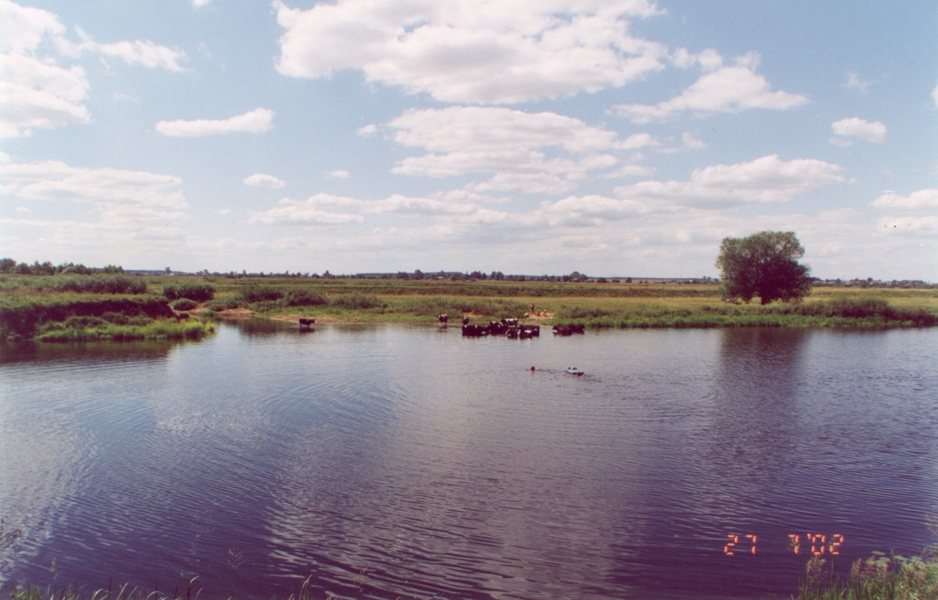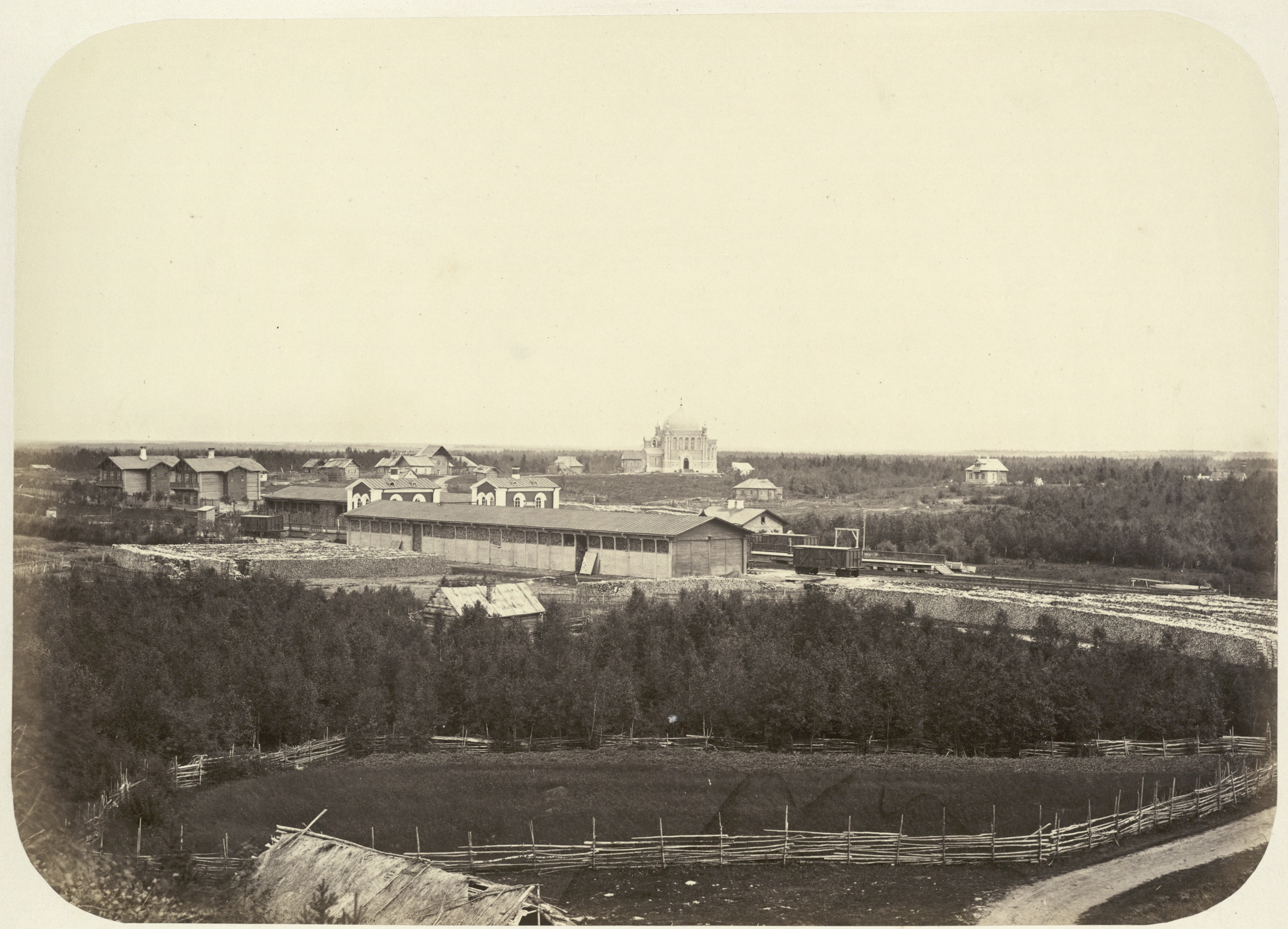|
Chudovo
Chudovo (russian: Чудово) is the name of several inhabited localities in Russia. ;Urban localities *Chudovo, Chudovsky District, Novgorod Oblast, a town of district significance in Chudovsky District of Novgorod Oblast ;Rural localities * Chudovo, Semyonov, Nizhny Novgorod Oblast, a village in Bokovskoy Selsoviet of the town of oblast significance of Semyonov, Nizhny Novgorod Oblast * Chudovo, Koverninsky District, Nizhny Novgorod Oblast, a village in Bolshemostovsky Selsoviet of Koverninsky District of Nizhny Novgorod Oblast * Chudovo, Okulovsky District, Novgorod Oblast, a village under the administrative jurisdiction of the urban-type settlement of Uglovka, Okulovsky District, Novgorod Oblast * Chudovo, Kalininsky District, Tver Oblast, a village in Kalininsky District of Tver Oblast * Chudovo, Staritsky District, Tver Oblast, a village in Staritsky District Staritsky District (russian: Ста́рицкий райо́н) is an administrative and municipalLaw #4 ... [...More Info...] [...Related Items...] OR: [Wikipedia] [Google] [Baidu] |
Chudovo, Chudovsky District, Novgorod Oblast
Chudovo (russian: Чýдово) is a town and the administrative center of Chudovsky District in Novgorod Oblast, Russia, located on the Kerest River (a left tributary of the Volkhov). Population: History The village of Chudovo was first mentioned in chronicles in 1539. By the mid-18th century, it developed into a big '' selo'' with a postal service station. By the beginning of the 19th century, Chudovo was the seat of Chudovskaya Volost of Novgorodsky Uyezd in Novgorod Governorate. The development of the area was further aided by the construction of the Moscow–St. Petersburg Railway, which opened in 1851. The railway to Novgorod was completed in 1871. A match factory, two cement-making factories, and a number of porcelain factories were built. In August 1927, the uyezds were abolished and, effective October 1, 1927, Chudovsky District was established, with the administrative center in Chudovo.Snytko et al., pp. 85–87 Novgorod Governorate was abolished a ... [...More Info...] [...Related Items...] OR: [Wikipedia] [Google] [Baidu] |
Chudovsky District
Chudovsky District (russian: Чу́довский райо́н) is an administrativeLaw #559-OZ and municipalLaw #368-OZ district (raion), one of the administrative divisions of Novgorod Oblast, twenty-one in Novgorod Oblast, Russia. It is located in the north of the oblast and borders with Kirishsky District of Leningrad Oblast in the northeast, Malovishersky District in the southeast, Novgorodsky District in the southwest, and with Tosnensky District of Leningrad Oblast in the northwest. The area of the district is . Its administrative center is the types of inhabited localities in Russia, town of Chudovo, Chudovsky District, Novgorod Oblast, Chudovo. Population: 25,829 (Russian Census (2002), 2002 Census); The population of Chudovo accounts for 70.0% of the district's total population. Geography The district is located in the Ilmen Lowlands and is crossed by the Volkhov River from southwest to northeast, dividing the district into approximately equal areas. The highest point in ... [...More Info...] [...Related Items...] OR: [Wikipedia] [Google] [Baidu] |
Novgorod Oblast
Novgorod Oblast (russian: Новгоро́дская о́бласть, ''Novgorodskaya oblast'') is a federal subject of Russia (an oblast). Its administrative center is the city of Veliky Novgorod. Some of the oldest Russian cities, including Veliky Novgorod and Staraya Russa, are located in the oblast. The historic monuments of Veliky Novgorod and surroundings have been declared a UNESCO World Heritage Site. Population: 634,111 ( 2010 Census). Geography Novgorod Oblast borders with Leningrad Oblast in the north and in the northwest, Vologda Oblast in the east, Tver Oblast in the southeast and in the south, and Pskov Oblast in the southwest. The western part is a lowland around Lake Ilmen, while the eastern part is a highland (northern spurs of the Valdai Hills). The highest point is Mount Ryzhokha in the Valdai Hills (). In the center of the oblast is Lake Ilmen, one of the largest lakes in Central Russia. The major tributaries of Lake Ilmen are the Msta, which originat ... [...More Info...] [...Related Items...] OR: [Wikipedia] [Google] [Baidu] |
Types Of Inhabited Localities In Russia
The classification system of inhabited localities in Russia and some other post-Soviet states has certain peculiarities compared with those in other countries. Classes During the Soviet time, each of the republics of the Soviet Union, including the Russian SFSR, had its own legislative documents dealing with classification of inhabited localities. After the dissolution of the Soviet Union, the task of developing and maintaining such classification in Russia was delegated to the federal subjects.Articles 71 and 72 of the Constitution of Russia do not name issues of the administrative and territorial structure among the tasks handled on the federal level or jointly with the governments of the federal subjects. As such, all federal subjects pass their own laws establishing the system of the administrative-territorial divisions on their territories. While currently there are certain peculiarities to classifications used in many federal subjects, they are all still largely ba ... [...More Info...] [...Related Items...] OR: [Wikipedia] [Google] [Baidu] |
Tver Oblast
Tver Oblast (russian: Тверска́я о́бласть, ''Tverskaya oblast'', ), from 1935 to 1990 known as Kalinin Oblast (), is a federal subject of Russia (an oblast). Its administrative center is the city of Tver. It was named after Mikhail Kalinin, the Soviet revolutionary. Population: 1,353,392 ( 2010 Census). Tver Oblast is a region of lakes, such as Seliger and Brosno. Much of the remaining area is occupied by the Valdai Hills, where the Volga, the Western Dvina, and the Dnieper have their source. Tver Oblast is one of the tourist regions of Russia with a modern tourist infrastructure. There are also many historic towns: Torzhok, Toropets, Zubtsov, Kashin, Vyshny Volochyok, and Kalyazin. The oldest of these is Rzhev, primarily known for the Battles of Rzhev in World War II. Staritsa was the seat of the last appanage principality in Russia. Ostashkov is a major tourist center. Geography Tver Oblast is located in the west of the middle part of the East European Plai ... [...More Info...] [...Related Items...] OR: [Wikipedia] [Google] [Baidu] |
Kalininsky District, Tver Oblast
Kalininsky District (russian: Кали́нинский райо́н) is an administrative and municipalLaw #4-ZO district (raion), one of the thirty-six in Tver Oblast, Russia. It is located in the south of the oblast and borders with Likhoslavlsky District in the north, Rameshkovsky District in the northeast, Kimrsky District in the east, Konakovsky District in the southeast, Lotoshinsky District of Moscow Oblast in the south, Staritsky District in the southwest, and with Torzhoksky District in the west. The area of the district is . Its administrative center is the city of Tver (which is not administratively a part of the district).Law #34-ZO Population: 52,047 ( 2010 Census); Geography The whole area of the district belongs to the drainage basin of the Volga River. The Volga itself crosses the district from northwest to southeast, entering the Ivankovo Reservoir. The biggest tributaries of the Volga within the district are the Tvertsa River (left), which has its mouth in th ... [...More Info...] [...Related Items...] OR: [Wikipedia] [Google] [Baidu] |
Okulovsky District
Okulovsky District (russian: Оку́ловский райо́н) is an administrativeLaw #559-OZ and municipalLaw #355-OZ district (raion), one of the twenty-one in Novgorod Oblast, Russia. It is located in the center of the oblast and borders with Lyubytinsky District in the northeast, Borovichsky District in the east, Bologovsky District of Tver Oblast in the southeast, Valdaysky District in the southwest, Krestetsky District in the west, and with Malovishersky District in the northwest. The area of the district is . Its administrative center is the town of Okulovka. Population: 31,153 ( 2002 Census); The population of Okulovka accounts for 48.3% of the district's total population. Geography Okulovsky District is located in the Valdai Hills in the basin of the Msta River. The rivers in the eastern part of the district drain into the Msta, and a stretch of the Msta forms the border of Okulovsky District with Borovichsky and Lyubytinsky Districts. The northern part of the di ... [...More Info...] [...Related Items...] OR: [Wikipedia] [Google] [Baidu] |
Uglovka, Novgorod Oblast
Uglovka (russian: Угло́вка) is an types of inhabited localities in Russia, urban locality (a urban-type settlement, work settlement) in Okulovsky District of Novgorod Oblast, Russia, located on the Moscow – Saint Petersburg Railway. Subdivisions of Russia#Municipal divisions, Municipally, it is incorporated as Uglovskoye Urban Settlement in Okulovsky Municipal District, one of the three urban settlements in the district. Population: History The village of Ugol (russian: Угол) was first mentioned in a chronicle in 1495. The development of the area started in 1851 when Uglovka became a railway station on the Oktyabrskaya Railway, Nikolayevskaya Railway which connected Moscow and Saint Petersburg. Uglovka developed first as a settlement serving the railway stations, and eventually the limestone extraction started. In the beginning of the 20th century, it was a part of Borovyonskaya Volost of Valdaysky Uyezd of Novgorod Governorate. In 1921, it was transferred to Shegri ... [...More Info...] [...Related Items...] OR: [Wikipedia] [Google] [Baidu] |
Urban-type Settlement
Urban-type settlementrussian: посёлок городско́го ти́па, translit=posyolok gorodskogo tipa, abbreviated: russian: п.г.т., translit=p.g.t.; ua, селище міського типу, translit=selyshche mis'koho typu, abbreviated: uk, с.м.т., translit=s.m.t.; be, пасёлак гарадскога тыпу, translit=pasiolak haradskoha typu; pl, osiedle typu miejskiego; bg, селище от градски тип, translit=selishte ot gradski tip; ro, așezare de tip orășenesc. is an official designation for a semi-urban settlement (previously called a "town A town is a human settlement. Towns are generally larger than villages and smaller than cities, though the criteria to distinguish between them vary considerably in different parts of the world. Origin and use The word "town" shares an ori ..."), used in several Eastern European countries. The term was historically used in Bulgaria, Poland, and the Soviet Union, and remains in use ... [...More Info...] [...Related Items...] OR: [Wikipedia] [Google] [Baidu] |
Nizhny Novgorod Oblast
Nizhny Novgorod Oblast (russian: link=no, Нижегородская область, ''Nizhegorodskaya oblast''), is a federal subjects of Russia, federal subject of Russia (an oblast). Its administrative center is the types of inhabited localities in Russia, city of Nizhny Novgorod. It has a population of 3,310,597 as of the Russian Census (2010), 2010 Census. From 1932 to 1990 it was known as Gorky Oblast. The oblast is crossed by the Volga River. Apart from Nizhny Novgorod's metropolitan area (including Dzerzhinsk, Russia, Dzerzhinsk, Bor, Nizhny Novgorod Oblast, Bor and Kstovo) the biggest city is Arzamas. Near the town of Sarov there is the Serafimo-Diveyevsky Monastery, one of the largest convents in Russia, established by Seraphim of Sarov, Saint Seraphim of Sarov. The Makaryev Monastery opposite of the town of Lyskovo, Nizhny Novgorod Oblast, Lyskovo used to be the location of the largest fair in Eastern Europe. Other historic towns include Gorodets, Nizhny Novgorod Oblast ... [...More Info...] [...Related Items...] OR: [Wikipedia] [Google] [Baidu] |






